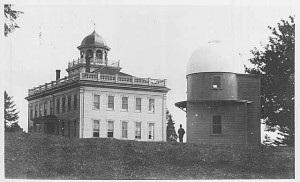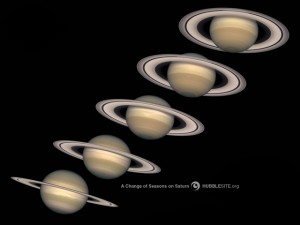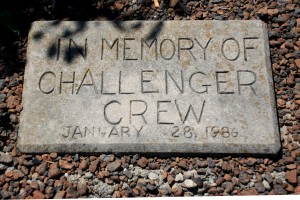In honor of the telescope’s one millionth science observation, I’m posting my favorite Hubble composite image as today’s wallpaper suggestion. Any resemblance to the tattoo on the back of my right calf is completely coincidental.
Wallpaper Wednesday
6 07 2011Comments : Comments Off on Wallpaper Wednesday
Categories : Instruments, News, Wallpaper
Quasars, ESO VLT, UKIDSS, and more
4 07 2011The FORS2 instrument on ESO’s Very Large Telescope (VLT). Gemini North. UKIDSS. Astronomers in Germany. Astronomers in the United Kingdom. Astronomers in Hawaii. A quasar with a mass two million times that of our Sun. That’s the short version of the story. The slightly longer version runs something like this:
The European Southern Observatory is home to the VLT and its array of (mostly) optical instruments. Among those instruments is FORS2 (FOcal Reducer and Spectrograph), a visible-spectrum imager and low-resolution spectrograph.* For the past five years, German astronomers working through the ESO have been searching for a quasar with a redshift higher than 6.5. The higher the redshift, the more distant the object; the more distant the object, the closer the object to the originary moment of the universe. Until recently, the most distant quasars we’ve observed have had redshifts of approximately 6.4.** This means we’re seeing these objects as they were about 870 million years after the Big Bang. We know there are more distant objects out there, but they can’t be viewed with instruments tuned to the visible spectrum. They’re simply too far away; by the time the radiation from these objects reaches us, it’s been so stretched by the expansion of the universe, it can only be detected in the infrared.
Enter the United Kingdom Infrared Telescope (UKIRT) Infrared Deep Sky Survey (UKIDSS). As its name implies, UKIDSS is a consortium of astronomers working together to conduct infrared surveys of the sky using the Wide Field Infrared Camera (WFCAM) on the UKIRT on Mauna Kea. Imagine the celebration when the team discovered a quasar with a redshift of 7 (actually, 7.085±0.003). Now known as ULAS J1120+0641, this new quasar shows us the universe only 770 million years after the Big Bang—100 million years earlier than previously measured quasars. If those numbers aren’t big enough to give you pause, here’s another one to consider: it took 12.9 billion years for the light from ULAS J1120+0641 to reach us. That definitely qualifies as far, far away.
But the story’s not quite over yet. Before announcing the quasar’s discovery in the journal Nature last week, the research team conducted some follow-up observations at the VLT and Gemini North to confirm the object’s distance from us. I could type for ten more minutes, but that still wouldn’t give me enough time to list all the groups and countries contributing to the VLT and Gemini Telescopes (and my typing speed is quick). I know I’m supposed to be in a state of sadness over the end of the U.S. space shuttle program, and I am, but I’m also heartened daily by the incredible successes of these multi-national, multi-agency, multi-interest projects.
The ESO has made the letter describing the discovery available in .pdf form in its public archives.
* The design of FORS2 and its now-retired twin, FORS1, happened by joint effort of ESO, Landessternwarte Heidelberg, University Observatory Göttingen and University Observatory Munich.
**The quasar CFHQS J0210045613 has a redshift of 6.44; SDSS 1148+52513, a redshift of 6.42; and CFHQS J2329+030114, a redshift of 6:42.
Comments : Comments Off on Quasars, ESO VLT, UKIDSS, and more
Categories : Gemini, Instruments, News, Observatories, Telescopes
Memorial
4 07 2011My office is located in a former elementary school building. For the most part, the building stands as it was when it was sold by the school district ten years ago. A few of the old classrooms have been upgraded with drywall and wood trim, but mostly, the rooms resemble my office: painted cinder block walls, bland single-color VCT floors, remnants of the intercom system still in place, a horribly inefficient heating-and-cooling system. So, it shouldn’t surprise me to see signs of the building’s former life, but this one, in a flower bed next to a door I seldom use, caught me unaware last week.
Space shuttle Atlantis is in its final stages of waiting on Launch Pad 39A at Kennedy Space Center for the beginning of STS-135 on July 8. I’m not superstitious enough to take my sudden notice of the plaque as some sort of omen—I work with the history of astronomy and space exploration every day, so odds are that it would have seemed significant to me, no matter when I saw it—but I will say it did cause me to rehearse (again) 25 years of space shuttle history in mental preparation for the upcoming launch. Many lives were changed in dramatic and still almost incomprehensible ways with the lost of Challenger. The end of the space shuttle program will also bring change, of course, but let’s hope for something more incremental and a lot less painful for everyone involved.
For more information on Friday’s launch, visit NASA’s space shuttle page for a mission brief, press kit and more.
Comments : Comments Off on Memorial
Categories : News
University of Washington
1 07 2011Just a quick addendum to my earlier post on Theodor Jacobsen Observatory at University of Washington. While digging through UW’s digital archives, I came across a photo of what must have been Professor Taylor’s original observatory: a modest structure, constructed of wood, standing at the north side of the main building of the Territorial University. If I’m reading my archival records properly, this was built after, or just around the time of, the university’s move to its new (present-day) location in 1895. That would mean the building in the background of the photo was no longer in use.*

Territorial University and Observatory, Seattle, Washington, n.d. Photo courtesy of MSCUA, University of Washington Libraries
*Interesting, non-observatory related factoid: the university regents tried, but failed, to sell this piece of land after the school relocated, and 115+ years later, UW still owns it. It is now known as the “Metropolitan Tract,” and is worth much money.
Comments : Comments Off on University of Washington
Categories : Observatories, University of Washington


